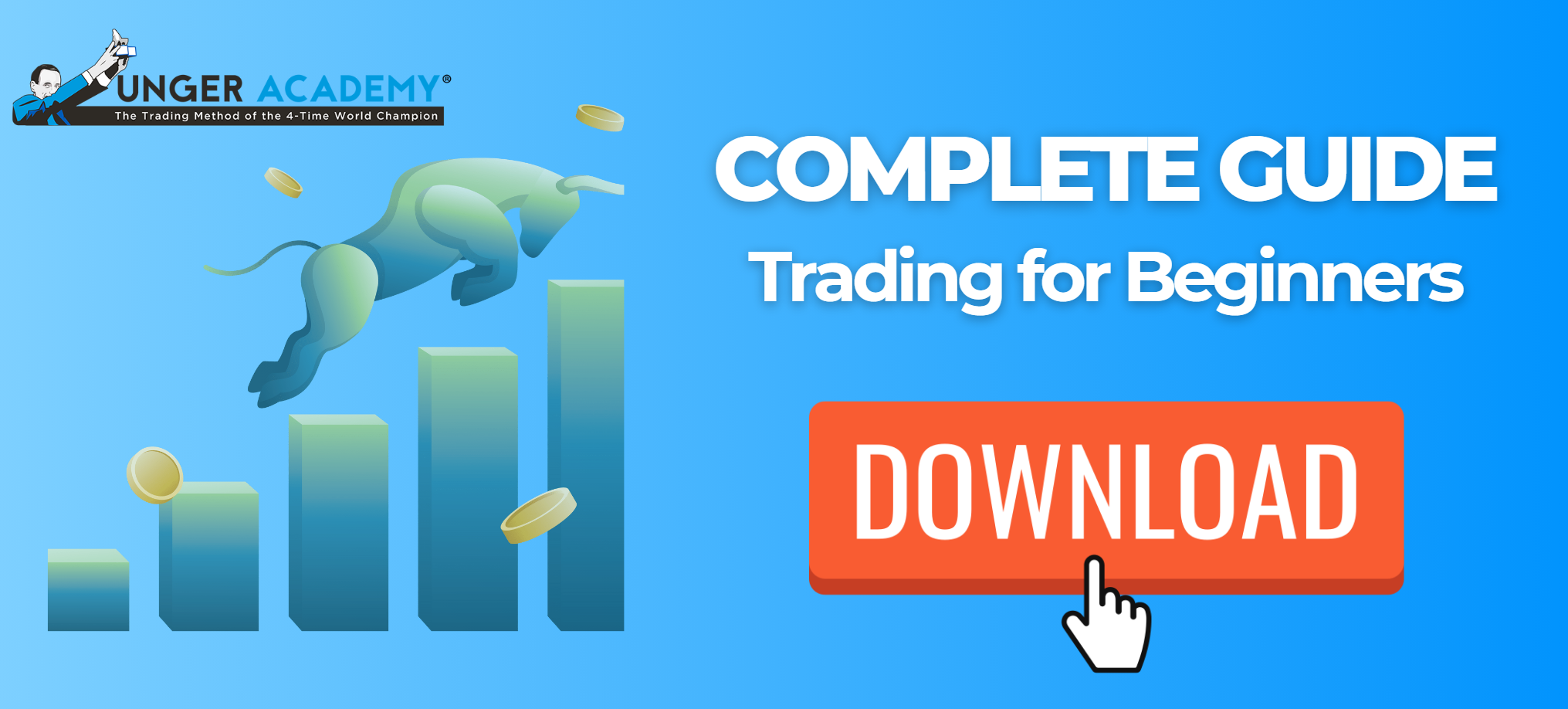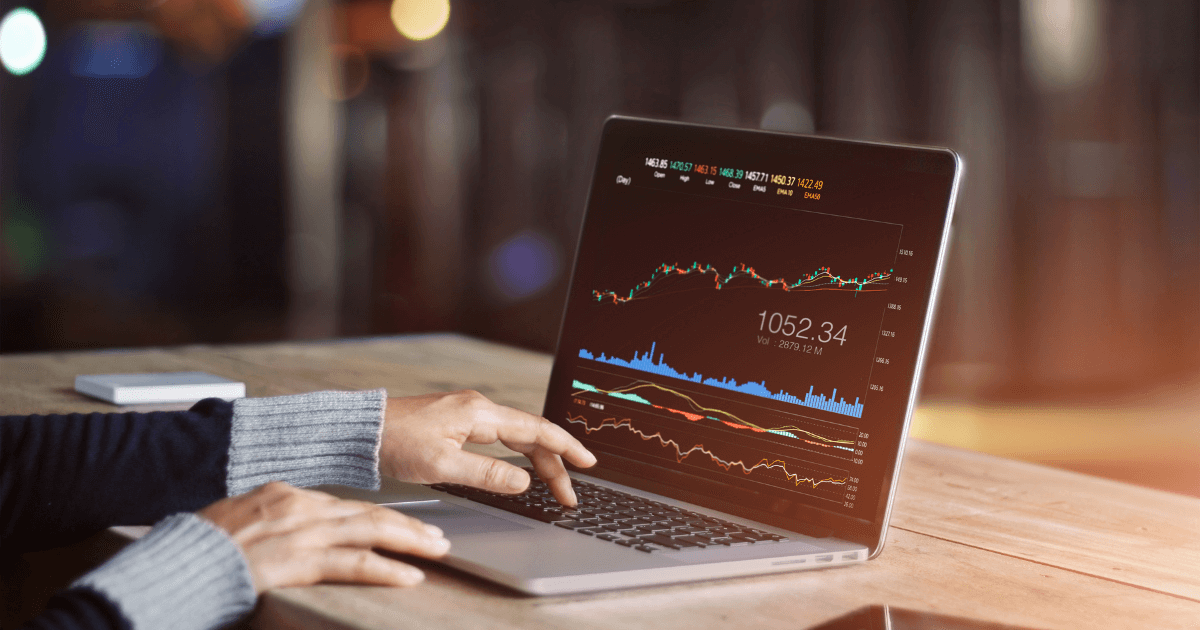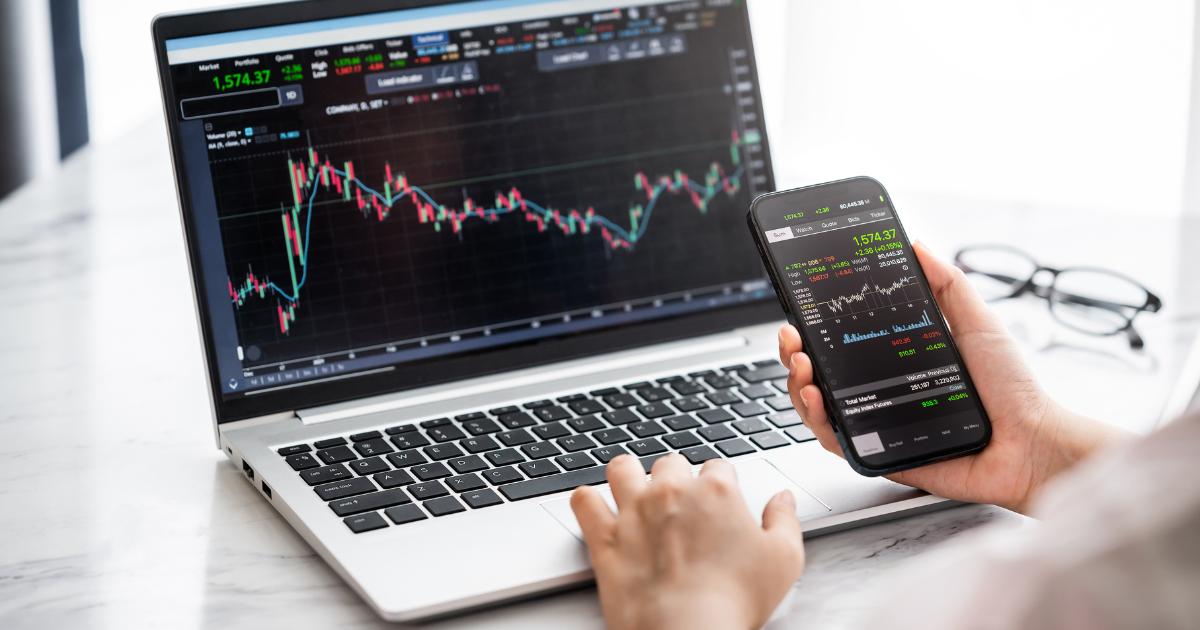Online trading can offer exciting opportunities, but it must be approached with method and preparation to avoid unnecessary risks and the illusion of quick profits. If you’re just getting started and want to set off on the right foot, this article will walk you through the fundamentals of trading for beginners.
We’ll dive into the key concepts you absolutely need to know if you’re starting from scratch and want to take your first steps into trading the right way.
Curious about what it takes to get started in trading with confidence and clarity? The tips in this article are aligned with the principles of the Unger Method®, developed by Andrea Unger, the only 4-time World Trading Champion and one of the most respected systematic traders in the world. Let’s dive in!
How Trading Works for Beginners: What You Need to Know
Trading involves buying and selling financial instruments such as stocks, currencies, commodities, and cryptocurrencies. The goal is to profit from price fluctuations. However, in order to trade successfully, it’s essential to understand how markets work, choose a reliable broker, and develop a solid risk management plan.
But what are the main approaches to trading? Let’s take a look at the two most common ones.
Traders can opt for discretionary or systematic trading.
Discretionary trading is the most common approach and relies on subjective decisions based on analysis, hypotheses, and personal intuition. Every trade is made “in the heat of the moment,” while the markets are open and prices are moving.
Systematic trading, on which the Unger Method® is based, is built on tested, repeatable strategies that are far less influenced by a trader’s emotions or instincts. Decisions are automated ahead of time, eliminating the need to monitor the markets constantly. This drastically reduces stress, fatigue, and emotional pressure—while saving you valuable time.
5 Essential Tips to Start Trading from Scratch
Starting your journey into the world of trading can feel overwhelming—especially if you’re starting from zero. But don’t worry! With the right preparation and strategy, anyone can get into this space. Let’s explore 5 key tips to help you take your first steps in trading, turning complexity into a rewarding and approachable opportunity.
1 – Always Trade with Regulated Brokers
One of the most common mistakes beginners make is trusting unregulated platforms. To protect your capital and trade safely, always choose brokers that are authorized by official regulatory bodies such as SEC, CySEC or FCA.
A regulated broker ensures the safety of your funds, the transparency of operations, and compliance with financial regulations. Plus, regulated brokers are regularly audited—helping you avoid scams and unreliable platforms.
2 – Study Market Dynamics Thoroughly
Trading is not gambling—it’s a discipline that requires study and preparation. Before investing real money, take time to understand key concepts such as:
-
Trading Strategies: Operational plans that define how, when, and why to buy or sell an asset based on predefined rules and investment goals.
-
Market Indicators: Mathematical calculations based on price and volume, used to identify trading signals, confirm trends, and assess market strength.
-
Asset Correlation: The degree to which two or more assets move in sync—useful for portfolio diversification or hedging strategies.
-
Risk Management: Defining your exit points and how much capital to allocate for each trade.
If you’re eager to start, download our free “Beginner’s Guide to Trading”: a 50-page PDF covering all the key elements to help you start trading with clarity, responsibility, and professionalism—following the advice of Andrea Unger, 4-time World Trading Champion
CLICK HERE TO DOWNLOAD THE FREE GUIDE!
3 – Start Practicing with a Demo Account (Then Go Live with a Small Amount)
A demo account is an excellent tool for beginners and is offered by most regulated brokers. It allows you to trade with virtual money, simulating real market conditions without risking actual capital.
Using a demo account helps you:
-
Understand how your broker’s platform works
-
Test different trading strategies
-
Improve your risk management
Once you feel confident, you can transition to a live account—starting with a small amount of capital to avoid large losses right from the start.
Trading live with a small amount helps you solidify what you’ve learned while also beginning to experience the emotional side of trading. In demo mode, emotions are barely felt, but in live trading, fear, anxiety, and excitement become very real due to the possibility of winning or losing actual money.
Just don’t get stuck in demo mode for too long. Transitioning to live trading is essential to developing the full range of trading skills.
4 – Learn to Manage Risk Effectively
Risk management is a crucial component of trading. Even experienced traders face losses—but what sets them apart is their ability to control them. Some fundamental principles of risk management include:
-
Never invest more than 2% of your capital in a single trade
-
Use automatic exit tools like stop loss and take profit to limit losses
-
Diversify your portfolio to reduce risk exposure
Avoiding emotional decisions helps you stay disciplined and make more rational choices.
5 – Define Your Trading Plan
What exactly is a trading plan? Simply put, it’s a written strategy that helps you stay on track—even when markets are uncertain. A solid trading plan should include:
-
The assets you’ll trade
-
The capital you’ll invest
-
Entry and exit strategies
-
Risk management rules
Following a plan helps prevent impulsive decisions and keeps your trading grounded in logic and preparation. While it may not seem essential at first glance, having a plan is critical to avoid blowing through your entire account.
Your trading plan should also define your position sizing—how much capital to allocate per trade. This is often overlooked but can make the difference between long-term success and failure.
So, How Can You Start Trading if You’re a Beginner?
As we’ve seen, getting started with trading the right way requires study, practice, and discipline. Choosing regulated brokers, expanding your market knowledge, progressing step by step, managing risk, and defining a solid strategy are all key to building a successful trading career.
By following these tips, you’ll be able to approach trading more consciously—reducing risks and increasing your chances of success.
If you’re eager to learn more, download our free “Beginner’s Guide to Trading”: a 50-page PDF covering all the key elements to help you start trading with clarity, responsibility, and professionalism—following the advice of Andrea Unger, 4-time World Trading Champion
CLICK HERE TO DOWNLOAD THE FREE GUIDE!












